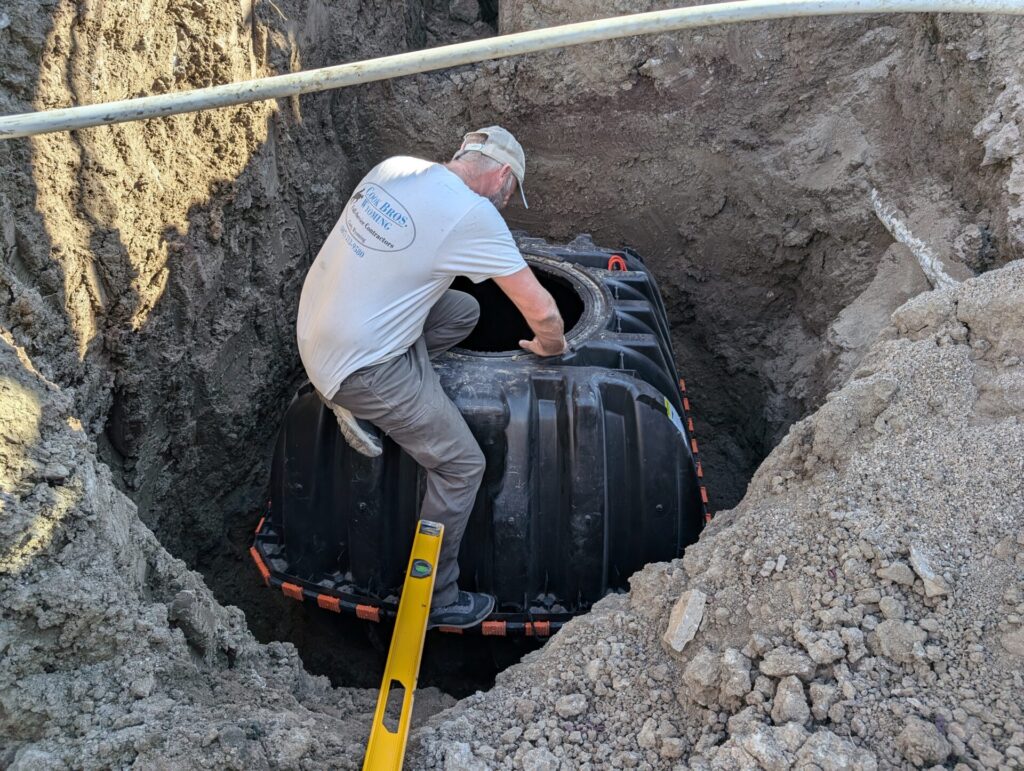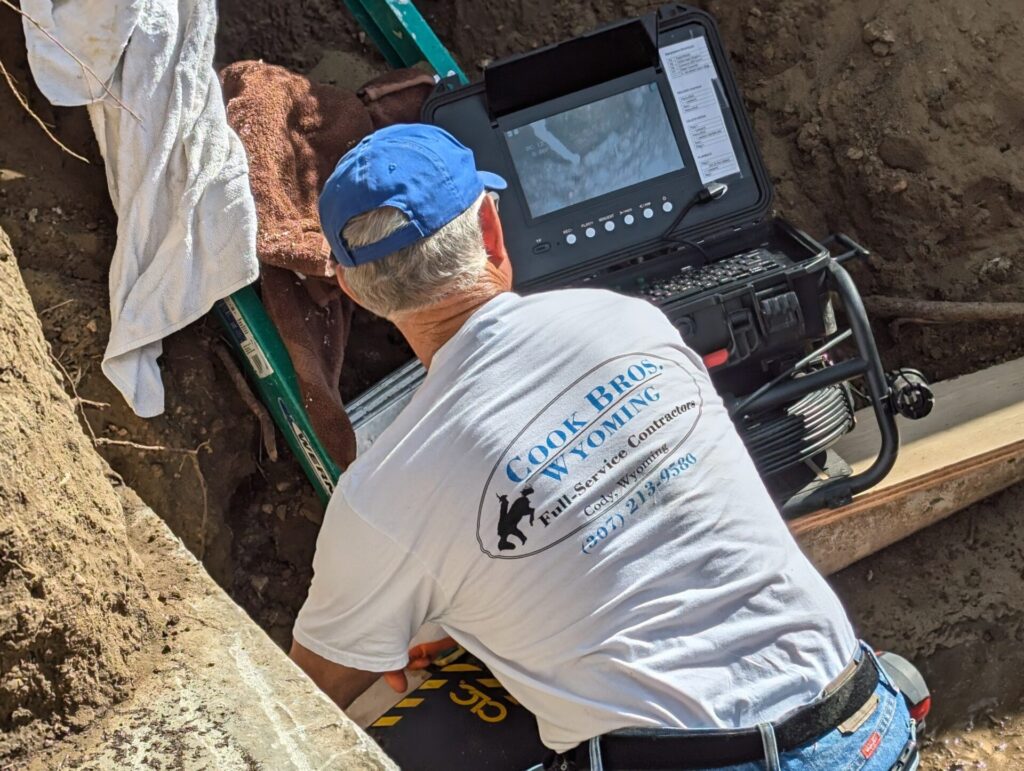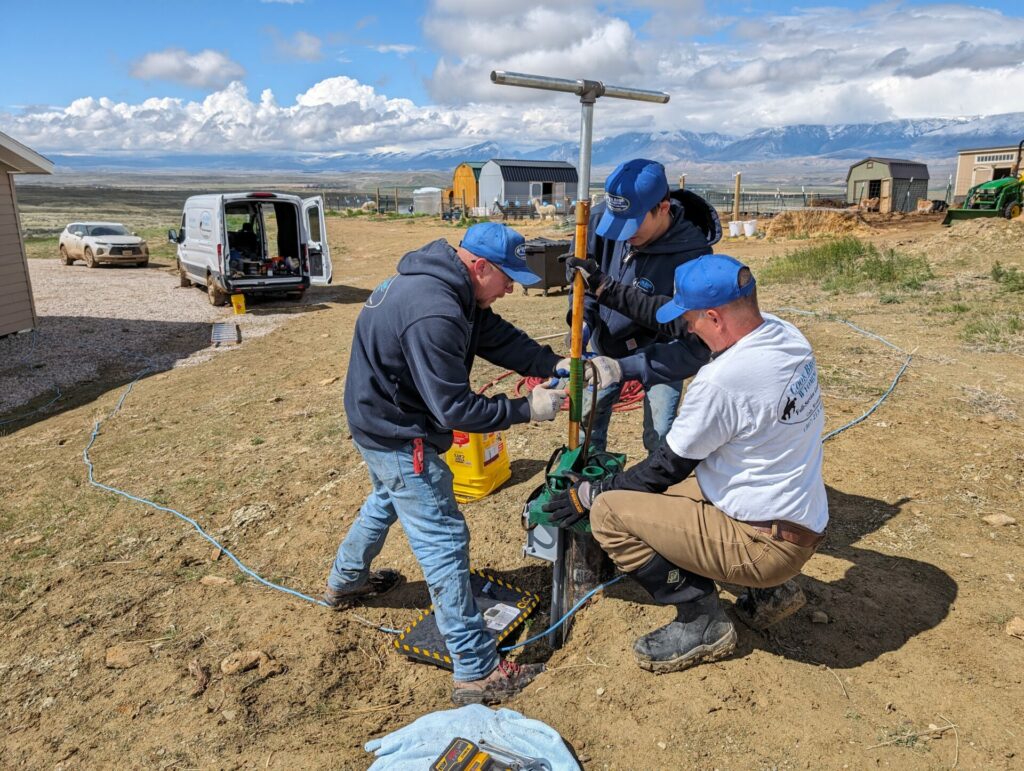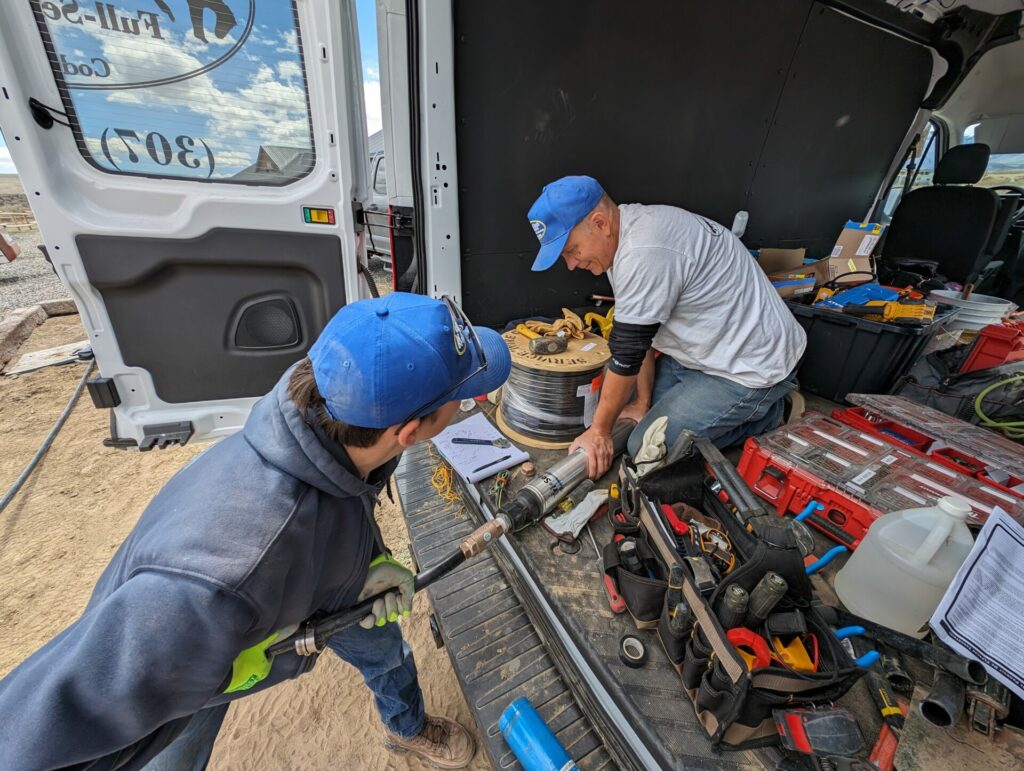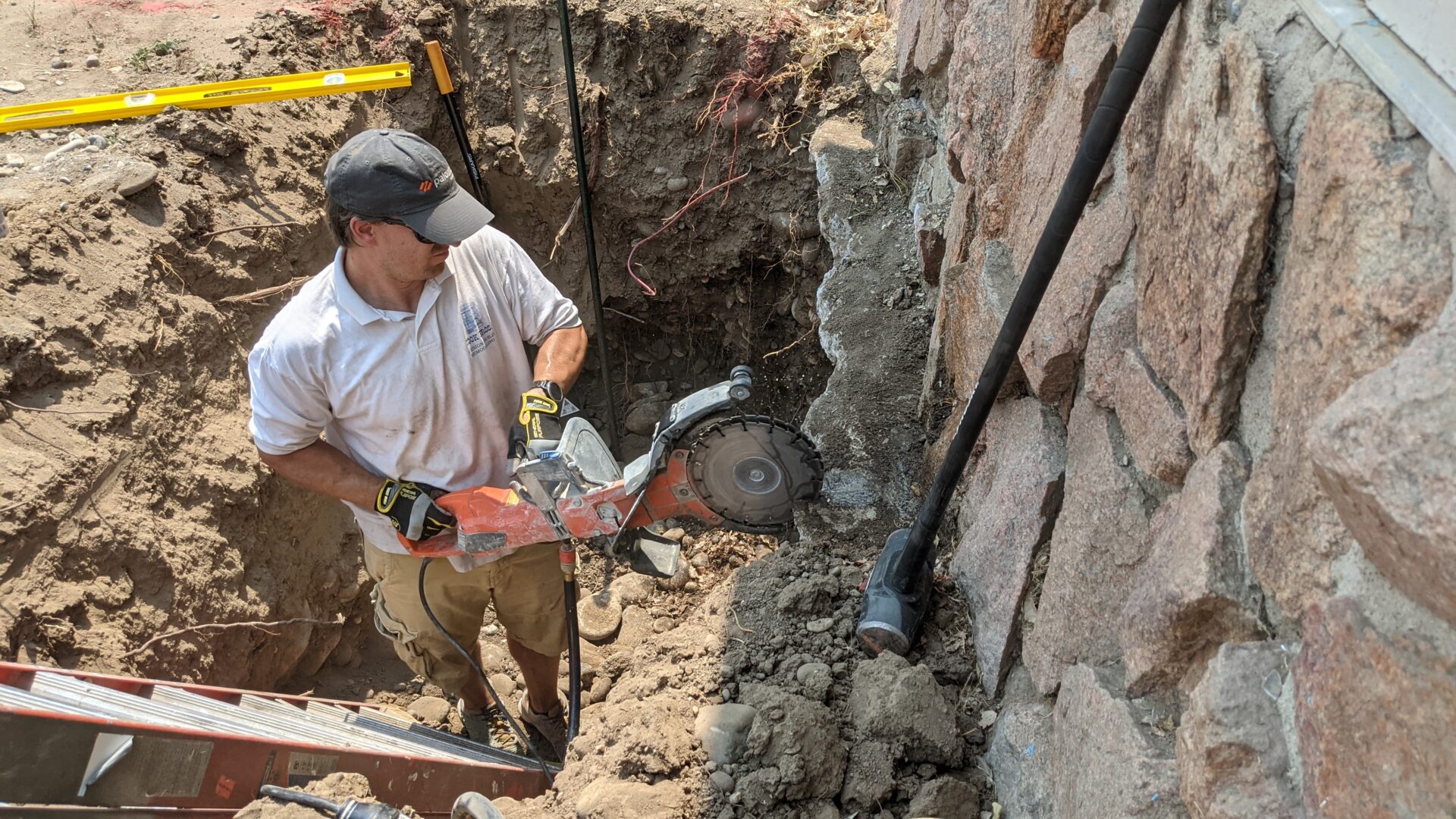Carbon Monoxide (CO) Poisoning
March 20th, 2025 | by robco | Posted in Uncategorized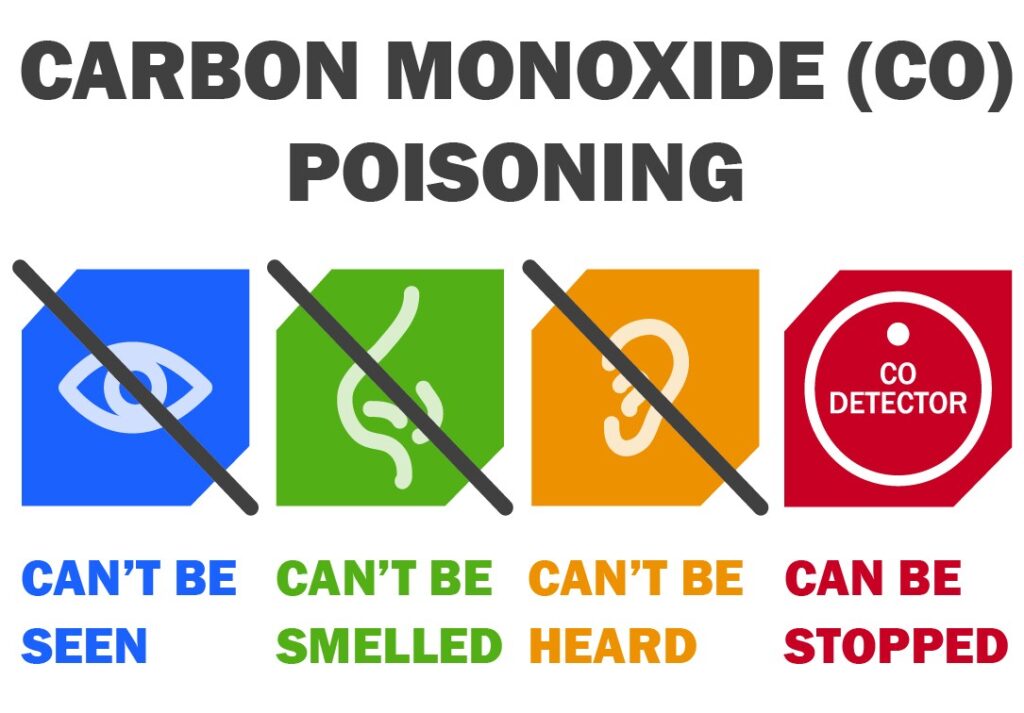
A Scary Recent Experience, which Turned Out Well
I want to begin this article with an actual real-life and recent story.
When you’ve been in the business as long as I have and have been into literally thousands of homes over 43 years spent in various home improvement businesses as an owner, technician and operator… you accumulate stories that can help shed light on the importance of the subject of this article.
One such story and example occurred in January of 2025, when an 82 year old homeowner couple contacted me and said that their carbon monoxide alarm had activated and gone off in their bedroom, which is two stories above the basement containing their gas furnace. It should be mentioned here that their carbon monoxide monitors were actually provided and installed by their local fire department service, so they are not cheapo or unreliable monitors or improperly deployed.
I advised them to turn off their furnace and I would get right out there to inspect, analyze, and test everything and that they should not run the furnace until that had been accomplished. It was 20 below zero outside so this was not taken lightly.
Upon my arrival at their home, I had them show me the way to their furnace and got some information from them about the furnace’s age, etc. As it turned out it was a high quality, high efficiency, natural gas forced air condensing furnace… but it was 25 years old. So that was a good piece of information to know before I began my inspection and testing as failures occur more frequently as the appliances age.
Now, at the same time that their carbon monoxide alarm went off, their furnace had also “Auto” shut down. The homeowner had fiddled with it and tried to see if there was a reset button, or a blown fuse, etc. but the furnace would not stay on and run for more than a couple of minutes, before shutting down again. This was a GOOD thing, as it prevented the homeowners from continuing to run the furnace when there was a Carbon Monoxide alarm situation. After the carbon monoxide alarm sounded, the furnace was automatically turned off, not by any CO detection, but by another safety device on the furnace even before I told him to do so on the phone.
My inspection revealed a flame rollout condition, which was triggering the high temp rollout switch as it is designed to do. In fact, this rollout switch and sensor had eventually then gone bad before I got there on site, and was no longer functioning, allowing the furnace to run away hot with a bad rollout flame condition when I tested it. Again, thankfully the homeowner had not overridden this device.
The cause of the flame rollout was then diagnosed after other inspections and tests, to be a clogged secondary heat exchanger that was restricting the exhaust gas flow like a kinked garden hose restricts water flow.
And there was a leaking primary heat exchanger as well, which was allowing the exhaust gas fumes to mix in with the house air as it flowed over the heat exchanger back up to the house supply ducts. The carbon monoxide created by the poor, restricted, incomplete combustion of the gas, was leaking INTO the house air and being circulated throughout the whole house through the supply ductwork. The concentration of CO in the house air was high enough to set off the CO monitor in their master bedroom – at least over 70 Parts per Million (ppm), in the bedroom and house air. Thankfully, they had the monitor, or they might not have woken up… ever.
A HUGE dangerous catastrophe was avoided, but how long has this poisoning been occurring at lower levels than their CO monitor could detect? Months? Years? What irreversible neurological damage or other injuries has already occurred with the homeowners?
It is real. And I believe low concentration level CO poisoning is much more prevalent than is known or spoken about. The fatalities get the news attention. Not the low level poisonings and brain damage in what? Maybe 10 thousand homes with low level poisoning occurring for every fatality? Nobody knows the numbers, which is the problem. A silent killer…CO.
So, there is one of many stories of my own personal professional experiences with CO poisoning. We all hear news stories frequently of horrible whole family annihilation due to CO leaks nobody knew even existed in the home.
It is not worth taking the risk, folks. Get your furnaces inspected and tested, yearly. Even newer units could be poisoning you and your family if not installed or functioning properly.
Carbon Monoxide Poisoning – Not what you think
In my experience, very few people understand or comprehend both the risks and the potential damage and injuries that can result from exposure to carbon monoxide (CO).
Most everyone has heard that very high concentration level exposure to CO can be dangerous or fatal. For instance, people committing suicide using their automobile in an enclosed garage while it’s running.
But what few understand, is that Low concentration level chronic exposure to carbon monoxide is a much larger and widespread problem. Low Level CO poisoning occurs with much higher frequency than fatalities and is largely unnoticed. Again, a very Low concentration level exposure to carbon monoxide for longer periods of time, can be as dangerous as an acute life threatening high concentration level dose.
Exposure to Low concentration levels of CO, for a longer period of time, presents dangers and risks for permanent neurological damage and other potential irreversible injuries. This is the really insidious, nasty reality about carbon monoxide poisoning – a little bit over a long period of time is equally dangerous as a large dose over a short time.
You cannot simply “walk outside” and “get some fresh air” and expect to cleanse your body of carbon monoxide. It is cumulative, persistent poisoning where the carbon monoxide stays in your body on the surface of your red blood cells for a long time and it takes a long time to be removed or eliminated – long after the exposure and ingestion by breathing has ended.
How Carbon Monoxide Poisoning Works
As we all know, the human body requires oxygen (O2) to our cells, particularly critical is oxygen to our brain, for us to survive. So, when you breathe air into your lungs (air is about 21% oxygen) the O2 molecules pass through the tiny blood vessels in the lining of your lungs will attach themselves to your red blood cells. Once the O2 molecules attach to the outside of your red blood cell, then the O2 will be carried on the red blood cells to every cell in the body – everywhere the blood circulates – and thus deliver the essential oxygen to all cells of your body.
Now – carbon monoxide (CO) should NOT be confused with carbon dioxide (CO2) which is relatively harmless to humans. CO and O2 both attach to the outside of your red blood cells when it’s present in the air you breathe into your lungs. But it is critical to understand that the affinity of your red blood cells for CO is 200 times stronger an attraction than is the red blood cells affinity for O2. So, this means if you get too much CO covering the surface of your red blood cells, then oxygen has no surface area to attach to and is blocked out. And again, remember the CO “magnetic force” for lack of a better explanation, is 200 times as strong as the “magnetic force” attraction of oxygen to your red blood cell.
Drowning Without Water
This mechanism by which carbon monoxide poisoning becomes fatal is asphyxiation – the same as occurs in drowning – when your body and specifically your brain is deprived of adequate levels of oxygen for a few minutes.
Now, a low level of carbon monoxide concentration, meaning you don’t have a very high concentration in the air of your home or office where you breathe and live and spend a lot of time, is still a problem. And the danger and potential injury is tied to the length of time of exposure to the lower levels of CO.
When carbon monoxide is present in these low concentration level conditions then the carbon monoxide doesn’t cover your blood cells completely or to the extent that it would take to asphyxiate you within a couple hours or a couple minutes even. But it does cover some of the surface of your red blood cells and it accumulates and does not really go away for a long time. So, the longer the time that you are exposed to a lower level of carbon monoxide, the more damage and risk it brings to the health of humans.
CO Poisoning is Not “All or None” – A little over a longer period of time is Injurious too
In other words, in another macabre but memorable example – if you put a plastic bag over your head that is airtight and sealed it off, you would probably die from asphyxiation within approximately 5 minutes due to the brain being deprived of adequate O2. That would be analogous to a VERY high level dose of carbon monoxide where all of the red blood cells surfaces are covered with carbon monoxide and no oxygen can get to it.
In contrast if you were to take that same plastic bag that you’ve stupidly put over your head and made a few little holes in it then you would get some oxygen through those holes and ultimately into your lungs and ultimately into your red blood cells and to your brain, tissues and other cells. But it would still be starving for oxygen compared to what you’re used to which is unobstructed breathing of a much higher volume of normal concentration containing 21% oxygen in the air. So, in that grisly scenario and example, you might not pass out and lose consciousness for 20 or 30 ?? minutes as opposed to in only five minutes as when no oxygen was getting into the bag.
Now, don’t try this at home – it is a concept. This is merely a graphic demonstration/example so that the point can be made, appreciated and remembered.
And the point is: carbon monoxide poisoning is not an “all or none,” and not an “either fatal or harmless” situation. A lesser concentration exposure to CO over a longer period of time can ALSO do permanent damage to your body and can be fatal as well.
So, carbon monoxide poisoning is not something to trifle with. It is a sneaky, invisible killer that you can only detect by using proper equipment and inspecting the potential sources.
Where Does Carbon Monoxide Come From
Now let’s talk about where carbon monoxide comes from in the first place. For the most part CO does not naturally exist in nature or the air that we breathe outside. Carbon monoxide is formed from incomplete combustion of burned fuel sources such as natural gas or propane. But gasoline, fuel oil, diesel and even some solid fuels can also produce carbon monoxide when burned.
If a gas appliance such as a gas hot water heater or gas furnace in a home is operating properly, meaning there is adequate combustion/makeup air, the air to fuel mixture ratio is right, and other factors and considerations are good, then little or no carbon monoxide is created at all by the combustion process. However, a very small concentration of carbon monoxide does normally occur in such gas appliances in homes and is not a problem, in and of itself.
How Does Carbon Monoxide Get into Your Home’s Air
As long as the exhaust gases and any CO all go up the exhaust vent stacks and to the outside and is not dumped into the inside air which people live in and breathe, then it is typically harmless at low levels. In other words, the combustion byproducts, meaning the gas exhaust where the carbon monoxide might exist, are intentionally and positively rejected to the outside air and not allowed to vent to the inside of the house.
That is when everything is operating properly. But often such appliances are operating improperly due to many reasons including the following, among others:
- improper installation and venting
- improper gas pressure adjustment in the burner system
- inadequate makeup air to supply the combustion flame
- cracked/leaking and/or clogged heat exchangers
- poor ventilation which can cause the exhaust vent stack pipe to not be adequately removing the exhaust gas from the home and from the appliances to the outside air.
- Downdrafts or backdrafts as a result of air pressure imbalances and other atmospheric exhaust vented gas burning appliances in proximity to the furnace
And of course, even if these appliances were and still are installed properly, they can still fail due to aging, deterioration from corrosive actions on the components and metal fatigue from shrinking and swelling cycles repeated over time.
The last type of issue mentioned, “metal fatigue” is a common cause of a forced air gas furnace failure and CO infiltration into the house air where the heat exchanger develops cracks/leaks which allows the exhaust gases to mix with the house air as it flows across it in the ductwork and heat exchanger part of that ductwork. Thousands of heat up (Expansion) /cool down (contraction) cycles during normal operation over the years can cause the metal to crack. Think in example, like happens when you flex/wiggle a piece of metal back and forth many times till it breaks.
How Do You Know if YOUR Home is Safe
To complicate things, it is important to understand that carbon monoxide is colorless, odorless and tasteless and impossible for a human to detect its presence, other than when symptoms from poisoning are detected. Unfortunately, the symptoms can be caused by many other lifestyle sources, so carbon monoxide poisoning is often not noticed until too late – when it is at a seriously elevated level and possibly too late to prevent or avoid permanent health damage or death.
The classic situation of fatalities from carbon monoxide poisoning is that people go to sleep and never wake up. They are poisoned as they breathe while sleeping and become asphyxiated slowly as the carbon monoxide locks out oxygen from red blood cells as the victim is unconscious and unaware of anything occurring.
So why is an HVAC heating and cooling contractor opining about carbon monoxide poisoning? After all, I am neither a Medical doctor nor a chemist or biologist.
The answer is because we are often the only people aside from medical emergency personnel to be in a position to test for, discover or measure any carbon monoxide presence or risk in the home prior to a health incident being reported. And even more pointedly the HVAC contractor, unlike medical professionals, is also the only one in a position of being able to help remedy the carbon monoxide source and problem once detected.
To further illustrate the truth of that last statement, it is a sad fact that HVAC technicians and workers are the number one trade and occupation with the highest Carbon Monoxide poisoning and neurological damage- bar none. We have surpassed chemical plants in the oil and gas refineries! And we have the earliest retirement age too, due to cognitive decline – all due to unnoticed, chronic, low level CO exposure for decades. This is a crisis.
Simply put, because HVAC technicians are constantly working in confined areas such as people’s homes, basements, crawl spaces and attics while servicing the gas burning appliances such as furnaces, boilers, hot water heaters, etc., day in and day out for hours a day over a 20+ year career, they are consistently and gradually poisoned by carbon monoxide – usually at low part per million levels. All because the homeowners are unaware that there is a carbon monoxide problem at all, and those technicians are probably not checking or wearing an exposure metering device to make them aware of the presence of carbon monoxide either.
You know how medical professionals who work daily in hospitals around radiological materials have to wear badges that continuously log and measure their exposure levels over specific periods of time to monitor their safety. This is not an option and is 100% required anytime they are in the hospital areas, every day. Well unfortunately, the same is not true for HVAC professionals… so they are exposed and at risk.
Home Type Carbon Monoxide Monitors are NOT ENOUGH
Another aspect of carbon monoxide risk is that people are lulled into a false sense of security by having typical homeowner type carbon monoxide monitors in their homes. You know, the kind that looks like smoke detectors that one can buy at the hardware store.
Well, this is a major problem and risk because those monitors that you buy and put in your home are literally programmed to never produce an alarm until the parts per million detected of CO exceed 35 parts per million or 50 parts for a million or even 70 or higher parts per million of carbon monoxide. (They are disaster Level contamination warnings, not low level warning devices).
Now think about that and understand what that means. It is simply stating that those carbon monoxide monitors typically used in homes are intended, designed and engineered only to detect very high acute concentration levels of carbon monoxide that might be life-threatening in a very short period of exposure. In other words, they completely miss, disregard and ignore lower concentration level CO exposure that may be occurring at all times and might have been ongoing for years unnoticed.
And this is the whole point of this article to make people aware that low level concentration exposure to carbon monoxide for long periods of time can cause permanent neurological damage and injury or even death. And home monitoring devices do not protect you at all from these low levels of poisoning.
Some Data on what Concentration levels of CO Constitutes
You can do research on the symptoms of carbon monoxide poisoning and learn about what concentration levels over various periods of time of exposure at those levels might produce XYZ symptoms. And like anything, individuals have different sensitivities to lower carbon monoxide levels just as they do with various allergens and allergies. So, it is not dispositive simply to “Self-Diagnose” that you don’t have any of those XYZ symptoms…therefore, you must not have a problem because your carbon monoxide monito alarms have never gone off.
What Does Carbon Monoxide Poisoning Do to Humans
Again, I am no expert on CO poisoning, chemist or medical advisor and have simply learned a lot over time just like any laymen does, from life experiences. I have read that one of the major risks and injuries of long-term low exposure to carbon monoxide is neurological damage, which means brain damage and looks like various stages of dementia symptomatically. It makes one wonder how much the current and growing dementia crisis is due to toxic exposures. I am personally convinced there is a lot to that theory.
With my experience as an HVAC professional and a lot of Hands-On testing with highly sensitive and accurate, calibrated equipment in many homes and offices, I can tell you that it is a lot bigger problem than the press, people or the government or anyone else lets on.
I would go so far as to say it is pervasive among many homes in America and the world and is largely undetected in most cases until the newsworthy catastrophe or the medical emergency brings awareness after the fact. The damage is done and is irreversible. Much of this is Easily Avoidable.
What Can We Do to Protect Our Families from the Potential of CO Poisoning
So, what can you do about it? Well, as mentioned above, simply buying and installing typical carbon monoxide monitors in your home will not prevent or alert you to low concentration CO poisoning or exposure. Or even make you aware that there is contaminated condition in your home’s air.
And simply self-diagnosing symptoms you might be able to identify is also not effective since damage can already be done by the time symptoms arise.
The solution is to implement regular, annual maintenance. Including a thorough professional inspection and testing of your gas and oil burning appliances in your home for any combustion issues, including the presence or production of carbon monoxide. Also test the house for low levels of carbon monoxide in all areas and spaces – not just at the furnace or hot water heater area.
Your HVAC professionals, IF they are actual professionals, will have the equipment and tools and knowledge and experience needed to thoroughly test and inspect all your fuel burning appliances and specifically identify any carbon monoxide presence or risks. Most rural parts of the country like Wyoming and Montana, do not even require any licensing and competence or experience confirmation to act as an “HVAC” service or installation provider. Not good. Buyer Beware has never been more important than here.
This should be at least an annual inspection if not twice a year which you need anyway to properly maintain, clean, tune up and inspect your heating and cooling systems and to prolong their life as well as know that they are operating properly, efficiently and safely.
I would go so far as to say that if your HVAC “professional” does not have the knowledge, experience, equipment and capability to perform these types of inspections and testing, then they are not really professionals at all, and you should seek out a professional who can do this and does do this routinely, serving homeowners appropriately.
Again, HVAC should Always be an actual licensed and regulated profession involving demonstrated years of experience, study and testing. Just as Plumbing and Electrical and Water Well systems trades are all typically regulated – for Public Safety.
It is pretty complex field. And carries with the practice of the trade a lot of responsibility. An unqualified technician or installer can actually blow up or burn down your home or kill you if not properly performed. Let alone the potential CO poisoning they might create or not notice and make a homeowner aware of. Many who claim to be professionals, in fact have little knowledge outside of being a tech who installs new equipment and replaces parts. Letting an unqualified technician perform this work in your home, is a risk you can easily avoid, and should.
It is not a bargain, saving a few dollars and putting your family in danger as a result.
Here is a graphic of lower levels of CO concentration exposure from online. There are many more.
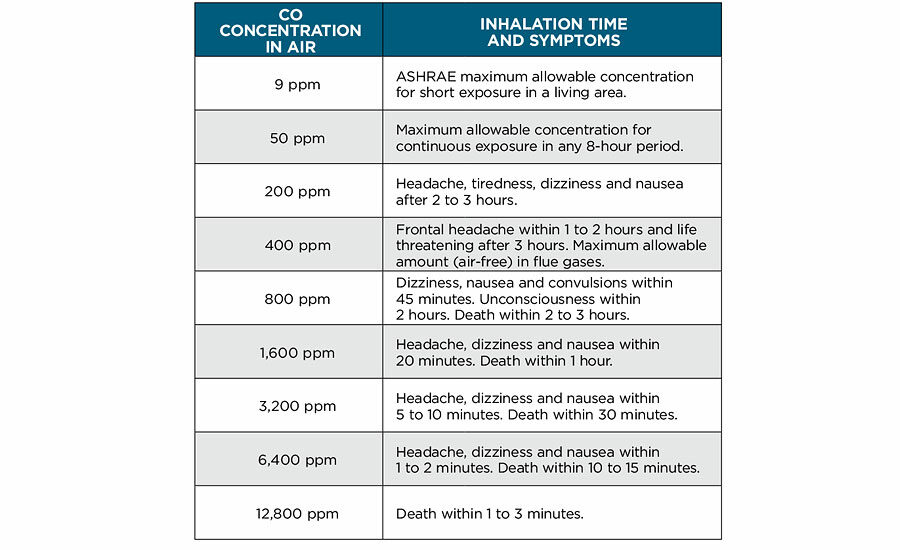
**********************************************************************************
“Google AI” states the following as the answer to what ppm levels CO monitors will alarm:
AI Overview
Carbon monoxide detectors typically alarm at 70 ppm (parts per million) after 1-4 hours, or 150 ppm after 10-50 minutes, or 400 ppm within 4-15 minutes.
***********************************************************************************
In my opinion, that is NOT acceptable to protect people from the danger of injury due to chronic, low concentration level exposure.
Give us a call anytime. Cook Bros. Wyoming tests every time we enter your home to keep us safe, and you too.
About the Author:

Rob Cook is a 66 year old active and working entrepreneur who specializes in many things relating to homes. Starting in 1978, Rob has been a licensed realtor, New Home Construction Superintendent for a large regional homebuilder, General Contractor, HVAC technician, Water Well pump installer and service technician, Electrician Technician, Property manager, Remodeling Expert and has flipped homes and owned over 100 rental units doing most if not all of the rehab work himself. He currently owns two contracting companies, one, Cook Bros. Design Build Remodeling in its 40th year, located in Arlington VA, and Cook Bros. Wyoming where he resides on a cattle ranch since 2006 and operates the business in Clark, Wyoming. Rob has also earned a Law Degree (JD) since 2000. He is a true “Home Expert” and does not do any work he cannot do expertly.

